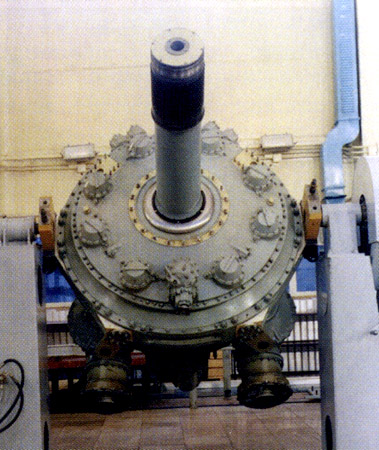Originally Posted by
SASless
......What about the aircraft with MGB's that are not able to contain a gear failure and afford a safe landing? How many single point failures do we tolerate that can result in a catastrophic result?
No...there shall never be a fault free aircraft....but we should hope to see them as failure tolerant as possible.
SASless-
The discussion of legacy Russian helicopter main gearbox designs jogged my memory. Consider the massive (8,000 lb) Mi-26 main gearbox design shown below. Instead of epicyclic stage(s) for the final drive, it uses
a torque-split configuration with 16 small diameter pinions driving a stacked pair of large diameter external bull gears. One major reason for using this configuration is to allow more room for a large diameter rotor shaft.
Regarding your question shown above asking about the capability to "contain a gear failure" so that it does not fully disable the gearbox, I thought you might find the following of interest. There was a paper published by the AHS back in 2008 about a trade study conducted by Sikorsky comparing an advanced epicyclic configuration to a split-torque configuration (somewhat similar to the Mi-26 MRGB) for the new CH-53K main gearbox. One conclusion from the study was that the split-torque configuration was less susceptible to damage from FOD being trapped between the output stage gears. Here's a quote from page 8 of the paper:
"Third, materials such as FOD (foreign Object debris) and wear debris could either be trapped inside or drop into a multiple-stage planetary system due to the planetary motion of those pinions between the ring gears the sun gears, which more likely could cause damage to those rotating parts.
The split-torque MGB design configuration, on the other hand, eliminates the above concerns……….Besides, the trapping of FOD in the split-torque MGB is less likely since all herringbone pinions stay outside the bull gear."
The approach Sikorsky engineers are discussing is slightly different than what I believe you were thinking of, but the goal is similar. That is preventing debris produced by a failed component from causing further damage. Sikorsky chose to use a split-torque configuration for the new CH-53K instead of the epicyclic configuration used on the previous H-53 models, Based on this paper, it seems apparent that Sikorsky engineers were considering the type of problem you brought up back in 2008.
The paper is worth reading if you can find a copy. It's titled, "Trade study on different design configurations of the CH-53K main gearbox".
